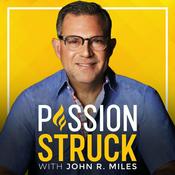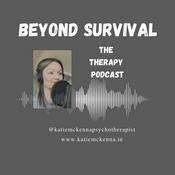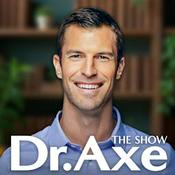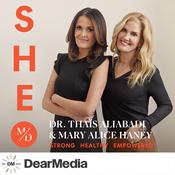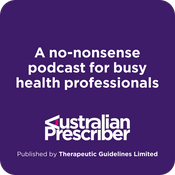34 episodes
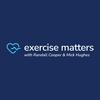
Heat Training & Performance with Chris Minson
17/12/2025 | 48 mins.
SummaryIn this episode, Randall Cooper and Mick Hughes discuss heat training and performance with guest Chris Minson, a professor of human physiology. They explore the benefits and challenges of heat training, its physiological impacts, and how it can be used as a training aid. The conversation covers various heat-training methods, including saunas and hot-water immersion, and their effects on cardiovascular health and athletic performance. Chris Minson shares insights from his research and experience with athletes, emphasising the importance of balancing heat training with other training methods and recovery strategies.Heat training can enhance cardiovascular function and thermoregulation.Saunas and hot-water immersion are common methods of heat acclimation.Heat training should be balanced with other training and recovery methods.Chris Minson emphasises the importance of individualised training approaches.Heat training can benefit both athletes and non-athletes.The physiological benefits of heat training include increased heart rate and cardiac output.Heat training can improve performance in hot conditions.Long-term heat exposure can lead to chronic adaptations.Heat training should be integrated carefully to avoid overtraining.Chris Minson shares insights from his work with professional athletes.00:00:00 Introduction to Heat Training00:00:00 Methods of Heat Training00:00:00 Physiological Impacts00:00:00 Balancing Heat and Recovery00:00:01 Insights from Chris MinsonInstagram@exercise_mattersTakeawaysChapters

Zone 2 vs HIIT with Dr Sebastian Sitko: How to Combine Low and High Intensity
10/12/2025 | 35 mins.
SummaryIn this episode of Exercise Matters, hosts Randall Cooper and Mick Hughes delve into the intricacies of Zone 2 training, discussing its benefits, challenges, and real-world applications. They explore the balance between high-intensity and low-intensity training, featuring insights from expert Sebastian Sitko. The conversation covers the importance of individualised training approaches and the role of Zone 2 in enhancing metabolic flexibility and endurance.TakeawaysZone 2 training enhances metabolic flexibility.High-intensity training should be limited to 2-3 sessions per week.Individualised training approaches are crucial for optimal results.Zone 2 is not a magic zone but offers substantial benefits.Balance between high and low-intensity training is key.Zone 2 training aids in fat metabolism and endurance.Polarised training can reduce fatigue compared to threshold training.Training load and genetics both play significant roles in performance.Success in training requires a spectrum of intensities.Listening to your body is essential for effective training.Chapters00:00:02 Introduction and Sponsors00:03:37 Zone 2 Training Overview00:05:33 High vs. Low-Intensity Training00:09:39 Polarised vs. Threshold Training00:17:22 Individualised Training Approaches00:27:26 Practical Applications and TakeawaysInstagram@exercise_matters

Zone 2 Training with Dr Sebastian Sitko: Aerobic Threshold, Lactate, and Engine Building
03/12/2025 | 45 mins.
SummaryIn this episode of Exercise Matters, hosts Randall Cooper and Mick Hughes delve into the intricacies of Zone 2 training, featuring special guest Dr. Sebastian Sitko, a leading expert in sports science. They explore the physiological benefits of Zone 2, its role in endurance sports, and how it can be integrated with high-intensity training. The discussion also touches on the importance of balancing exercise intensity and the mental resilience developed through long-duration training.TakeawaysZone 2 training is crucial for building endurance and improving mitochondrial function.Dr. Sebastian Sitko provides expert insights on the benefits of Zone 2 training.Balancing Zone 2 with high-intensity training can optimise performance.Zone 2 training enhances metabolic efficiency and lactate clearance.Mental resilience is developed through long-duration Zone 2 training.Zone 2 is often referred to as the 'fat-burning zone.'The talk test is a simple way to gauge if you're in Zone 2.Elite athletes spend about 80% of their training in Zone 2.Zone 2 training supports long-term structural and behavioural consistency.Understanding lactate and ventilatory thresholds is key to effective training.Chapters00:00:02 Introduction to Zone 2 Training00:01:05 Physiological Benefits of Zone 200:02:38 Balancing Zone 2 with High-Intensity Training00:40:23 Mental Resilience and Long-Duration TrainingInstagram @exercise_matters

Risk vs Reward in Training with Andrew Russell
26/11/2025 | 48 mins.
SummaryIn this episode of Exercise Matters, Randall Cooper and Mick Hughes discuss the balance of risk and reward in high-performance sports. They explore the importance of gradual training changes, the role of optimism and connectedness in training success, and share insights from high-performance manager Andrew Russell. The episode also features a remarkable story of athlete Seth O'Donnell's recovery journey, highlighting innovative approaches to training and injury management.TakeawaysGradual training changes are crucial to prevent injuries.Optimism and connectedness play a significant role in training success.Andrew Russell's insights on high-performance management are invaluable.Seth O'Donnell's recovery story showcases innovative training approaches.The acute-to-chronic workload ratio is key to managing athlete risk.High-performance sports require balancing risk and reward.Athletes often tread the line between risk and potential reward.Load management is essential in preventing overuse injuries.A supportive team is vital for an athlete's success.Understanding psychological limits is as important as physical ones.Chapters00:00:01 Introduction and Sponsors00:01:12 Life Updates and Training Protocols00:03:40 Restart and Episode Overview00:05:01 Discussion on Training and Risk Management00:07:51 Insights from Andrew Russell00:10:00 Balancing Risk and Reward00:12:20 Load Management and Injury Prevention00:20:14 Practical Applications and Case Studies00:30:01 Psychological Aspects and Team Support00:45:22 Seth O'Donnell's Recovery Story00:53:46 Key Takeaways and ConclusionInstagram@exercise_matters

Scrolling, Stress, and Sport with Stewart Cotterill
18/11/2025 | 39 mins.
SummaryIn this episode of Exercise Matters, hosts Randall Cooper and Mick Hughes discuss the impact of social media on athletic performance, mental health, and fitness. Mick shares his personal fitness journey, while Randall introduces research findings that highlight the adverse effects of social media use on training performance. They bring in expert insights from Professor Stuart Cotterall, who discusses the mental fatigue associated with social media and its implications for athletes. The conversation emphasises the need for strategies to manage social media use, particularly among younger athletes, and the importance of future research in this area.TakeawaysMick is enjoying his fitness journey and noticing improvements.Social media can hurt athletic performance.Research shows scrolling before training can hinder performance.Motivational videos are more beneficial than social media before workouts.Younger athletes are particularly vulnerable to the effects of social media use.Mental fatigue from social media can impact performance.Trolling and social comparison can demotivate athletes.Strategies are needed to manage social media use in sports.Professional athletes may have more support in managing their social media presence.Future research is needed better to understand the impact of social media on performance.Chapters00:00 Introduction to Exercise Matters00:58 Mick's Exercise Journey and High-Intensity Training03:10 The Impact of Social Media on Exercise05:35 Mental Health and Social Media Usage07:41 Research Findings on Social Media and Athletic Performance10:11 The Role of Coaches and Social Media Management13:27 Understanding the Psychological Effects of Social Media17:34 Mental Fatigue and Athletic Performance21:14 Boredom and Social Media Usage22:56 Differences Between Professional and Recreational Athletes26:31 The Need for Further Research31:55 Developing Healthy Social Media Habits36:41 Conclusion and Key TakeawaysInstagram@exercise_matters
More Health & Wellness podcasts
Trending Health & Wellness podcasts
About Exercise Matters
Listen to Exercise Matters, The Peter Attia Drive and many other podcasts from around the world with the radio.net app

Get the free radio.net app
- Stations and podcasts to bookmark
- Stream via Wi-Fi or Bluetooth
- Supports Carplay & Android Auto
- Many other app features
Get the free radio.net app
- Stations and podcasts to bookmark
- Stream via Wi-Fi or Bluetooth
- Supports Carplay & Android Auto
- Many other app features


Exercise Matters
download the app,
start listening.

